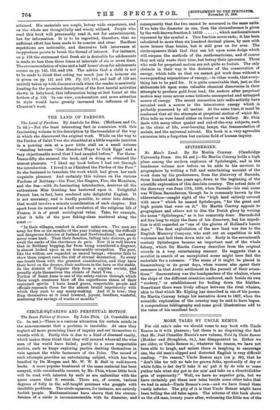THE HYGIENE OF MIND.
The Hygiene of Mind. By T. S. Clouston. (Methuen and Co. 7s. 6d. net.)—To appeal to the general reader upon a subject based essentially upon scientific knowledge is often enough to court failure, and it is therefore saying a great deal to acknowledge that Dr. Clouston's painstaking effort in this book should meet with a large measure of success. The author's aim is to instruct the lay public in the hygiene of mind from birth to adult life, and from adult life to decadence. He describes the human mind as the acme of organic evolution, and the hygiene of mind as the hygiene of brain and body, whatever the metaphysicians may say. He disposes of the various controversies in regard to the influence of heredity by taking the view of " the man in the street " that the progeny of a drunkard and a lunatic cannot be and is not good stock. He holds that prudent supervision, based on scientific knowledge, can enormously benefit future generations, and he seta himself to explain the principles upon which this end is to be
attained. His materials are ample, betray wide experience, and on the whole are thoughtfully and wisely utilised. People who read this book will presumably read it, not for entertainment, but for information. It is to be regretted, therefore, that no sufficient effort has been made to be concise and clear. Needless repetitions are noticeable, and discursive talk intervenes at inopportune points to break the thread of interest. For instance, on p. 178 the statement that fresh air is desirable for adolescents is made no less than three times at intervals of six or seven lines. The recommendation of nine and a half hours' sleep for adolescents occurs on pp. 145, 152, and 184. The advice that a child is not to be made to think that eating too much jam is a heinous sin is given on pp. 121 and 189. Pp. 117, 118, and half of 119 are entirely taken up with discursive talk when the reader is anxiously hunting for the promised description of the first mental activities shown in babyhood, this information being at last found at the bottom of p. 119. In our view, condensation and more attention to style would have greatly increased the influence of Dr. Clouston's work.



























































 Previous page
Previous page